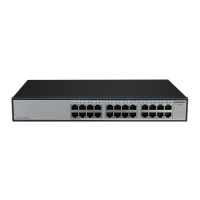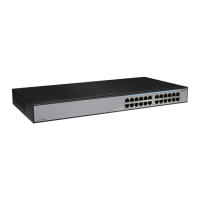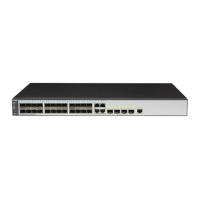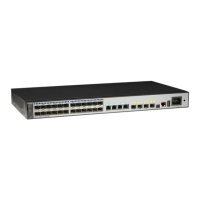CAUTION
Configuring loopback interface addresses based on NETs is recommended to ensures
that a NET is unique on the network. If NETs are not unique, route flapping will easily
occur.
Area addresses of NETs are checked when Level-1 IS-IS neighbor relationships are
being established, but not checked when Level-2 IS-IS neighbor relationships are
being established. Level-1 IS-IS neighbor relationships can be established only if area
addresses of NETs are the same.
4. Run:
ipv6 enable
The IPv6 of IS-IS process is enabled.
l (Optional) Configure the level of a device.
1. Run:
system-view
The system view is displayed.
2. Run:
isis [ process-id ]
An IS-IS process is created, and the IS-IS process view is displayed.
3. Run:
is-level { level-1 | level-1-2 | level-2 }
The level of the switch is configured.
l (Optional) Configure IS-IS host name mapping.
1. Run:
system-view
The system view is displayed.
2. Run:
isis [ process-id ]
An IS-IS process is created, and the IS-IS process view is displayed.
3. Run:
is-name symbolic-name
IS-IS dynamic host name mapping is configured. The system ID of the local device
is mapped to the specified host name.
The value of symbolic-name is contained in LSP packets and advertised to other IS-
IS devices.
On another IS-IS device displays the value of symbolic-name, but not the system ID,
of the local IS-IS device.
4. Run:
is-name map system-id symbolic-name
IS-IS static host name mapping is configured. The system ID of a peer IS-IS device
is mapped to the specified host name.
S6700 Series Ethernet Switches
Configuration Guide - IP Routing 6 IS-IS Configuration
Issue 01 (2012-03-15) Huawei Proprietary and Confidential
Copyright © Huawei Technologies Co., Ltd.
286

